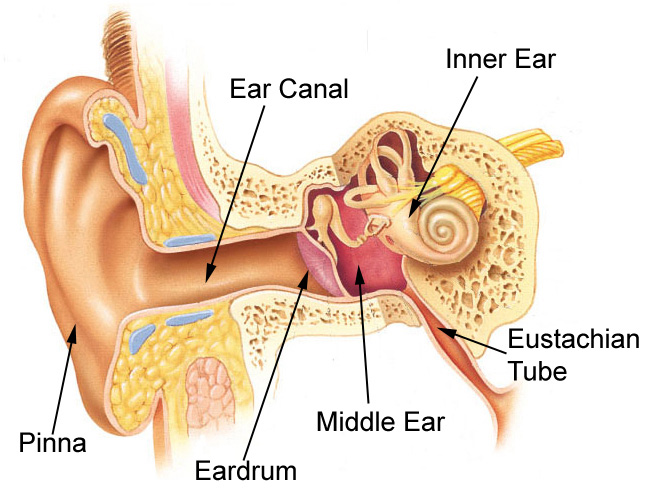How do humans hear?
This kids video does an excellent job in explaining how the human ears work in a simple yet comprehensive manner!
In a nutshell, the ear is divided into 3 parts – outer, middle and inner ear.
Outer ear – pinna/auricle:
- Part that we can see
- Main job is to collect sounds from our surroundings.
- Shape of ear is designed purposefully to modify high-frequency sound waves entering the ear before funnelling them to the middle ear. The changes in resonance enable us to locate the source of a sound.
- Includes the ear canal, where wax is produced. Earwax contains chemicals that fight off infections that could hurt the skin inside the ear canal. It also collects dirt to help keep the ear canal clean. Therefore, earwax is gross and essential.
Middle ear – eardrum and ossicles:
- After sound enters through the outer ear and travels through the ear canal, it reaches the middle ear.
- Main job is to take those sound waves and turn them into vibrations that are delivered to the inner ear
- Eardrum is a tight piece of skin that is stretched like a drum.
- Next to the eardrum are three tiny bones called ossicles. They are named malleus, incus and stapes.
- When the eardrum vibrates due to sound waves, it moves the ossicles as well.
- The bones help to conduct the sound to the inner ear.
Inner ear – cochlea:
- Cochlea is a small curled tube that is filled with liquid and lined with tiny hairs.
- When the ossicles vibrate, the liquid will be set in motion. The liquid will then cause the hairs to move. These movements create nerve signals that the brain understands as sound.
Fun fact! Do you know that the fluids in our ears help us to balance?
In the inner ear, there are three small loops above the cochlea called semicircular canals, which are filled with liquid and microscopic hairs. When you move your head, the liquid in the semicircular canals moves, too. The liquid moves the tiny hairs, which send a nerve message to your brain about the position of your head. In less than a second, your brain sends messages to the right muscles so that you keep your balance.
This is why we feel dizzy when we spin. Our brains are getting two different messages and are confused about the position of your head. Once the fluid in the semicircular canals stops moving, our brain get the right message and we regain our balance.
How do frogs hear?
Like us, frogs have an eardrum and inner ear too. The lack of an outer ear is due to the fact that it would be unhelpful and hinder their movement underwater. The frog’s eardrum is called the tympanic membrane or tympanum.
About the tympanum:
- Located directly on the side of a frog’s head behind the eye, acting as a shield and cover for their inner ear.
- Works like humans’ eardrums
Internally there is a bone attached to the tympanum. When sound strikes the membrane then the vibrations travel down the bone to the inner ear where the semicircular canals, cochlea, and papilla are located.. The tympanum works both under and above water to detect sound.
This has nothing got to do with hearing… but here’s a frog that sounds just like a cat! (Skip to 4:00 mark)
References
- Science, Live. 2018. “Why Are Ears Shaped So Strangely?”. Live Science. https://www.livescience.com/32439-why-are-ears-shaped-so-strangely.html.
- “Audiologists”. 2018. Audiologists. http://www.audiologysingapore.org/how-do-we-hear/.
- “Your Ears”. 2018. Kidshealth.Org. https://kidshealth.org/en/kids/ears.html.
- “How Do Frogs Make Sound And Hear It? – The Infinite Spider”. 2018. The Infinite Spider. http://infinitespider.com/frogs-make-sound-hear/.
- 2018. Tomsbirdfeeders.Com. http://www.tomsbirdfeeders.com/How-Do-Frogs-Hear_b_15.html.



1 comment for “[F&V] Kokopelli: Human and Frog Hearing Research”